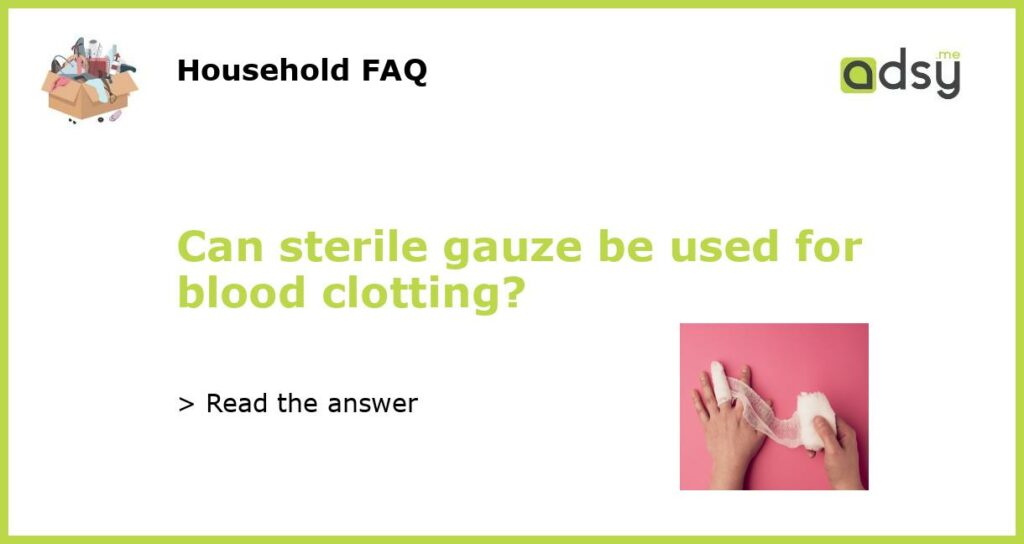Yes, sterile gauze can be used for blood clotting
Sterile gauze is a commonly used medical supply that has a wide range of uses, including wound dressing and blood clotting. It is a breathable fabric that is designed to be sterile, meaning it is free from bacteria and other harmful pathogens.
How does sterile gauze promote blood clotting?
When there is a cut or injury that causes bleeding, the body’s natural response is to form a blood clot to stop the bleeding. Sterile gauze can help promote blood clotting by providing a barrier that prevents further bleeding and allows the clotting process to occur. The gauze creates pressure on the wound, which can help to slow down or stop the bleeding. Additionally, the fabric itself absorbs the blood and helps to promote the formation of a clot.
Is sterile gauze enough for severe bleeding?
Sterile gauze can be effective for treating minor cuts and wounds that are not actively bleeding. However, it may not be sufficient for severe bleeding or arterial bleeding. In these cases, immediate medical attention is crucial and applying direct pressure with sterile gauze can help slow the bleeding while waiting for medical professionals to arrive. If the bleeding does not stop or is spurting, it is important to apply additional pressure and seek emergency medical care as soon as possible.
How to use sterile gauze for clotting?
When using sterile gauze for clotting, it is important to follow proper procedure to ensure optimal results. Here is a step-by-step guide on how to use sterile gauze for blood clotting:
- Clean your hands with soap and water, or use hand sanitizer if soap is not available.
- Put on sterile gloves to minimize the risk of infection.
- Remove the sterile gauze from its packaging and unfold it.
- Apply direct pressure to the wound using the gauze. If the gauze becomes soaked with blood, do not remove it. Instead, place another layer of sterile gauze on top and continue applying pressure.
- If the bleeding does not stop or significantly slows down after several minutes, seek immediate medical attention.
Other options for blood clotting
While sterile gauze is a commonly used method for promoting blood clotting, there are other options available as well, including:
- Hemostatic agents: These are substances that are specifically designed to promote blood clotting. They often come in powder or gel form and can be applied directly to the wound. Examples include products like QuikClot and Celox.
- Tourniquets: In cases of severe bleeding, a tourniquet may be necessary to stop the bleeding. This involves applying pressure above the wound to restrict blood flow to the affected area. Tourniquets should only be used as a last resort and in situations where there is a risk of severe or life-threatening bleeding.
- Medical intervention: In cases of severe bleeding or arterial bleeding, immediate medical intervention may be required. This may include suturing the wound, cauterization, or other medical procedures to stop the bleeding.
In conclusion, sterile gauze can be used for blood clotting and is a commonly used method for treating minor cuts and wounds. However, it may not be sufficient for severe bleeding, and additional measures such as hemostatic agents or tourniquets may be necessary in those cases. It is important to follow proper procedure when using sterile gauze for clotting and to seek immediate medical attention if the bleeding does not stop or significantly slows down.






